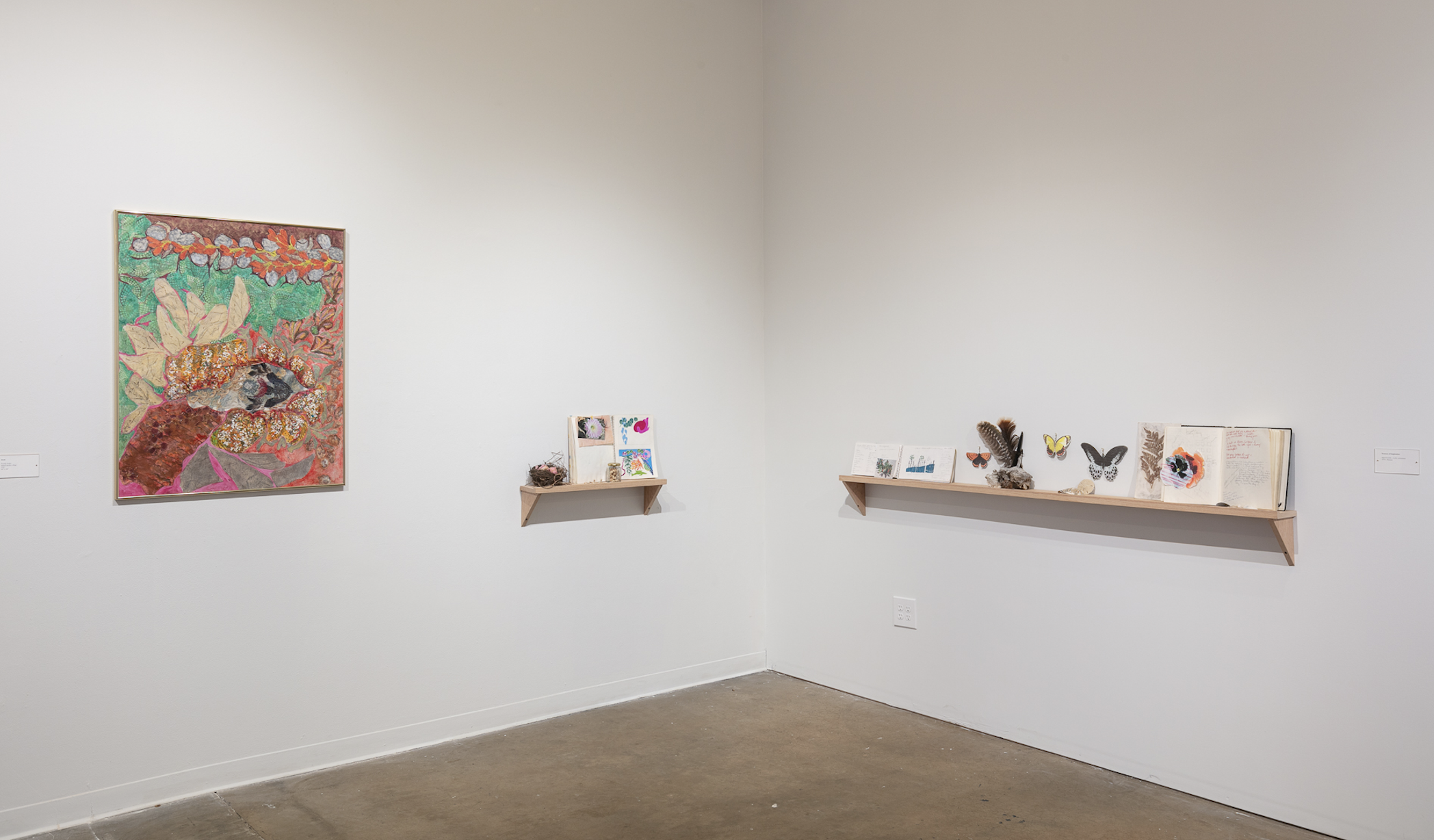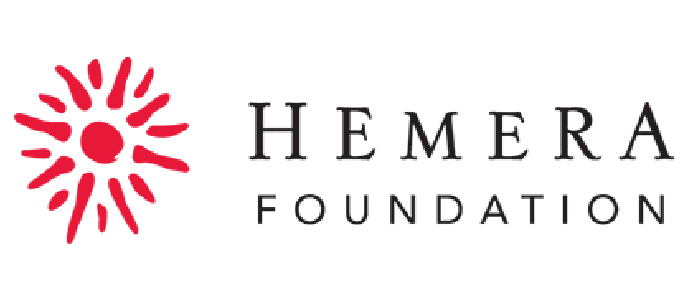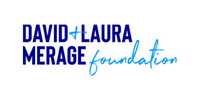Sally Elliott Retrospective
Dissonant Harmony: A Life in Art
March 4 - April 10, 2022
About the Show
Join us in celebrating the creative life of Colorado artist Sally Elliott with this retrospective exhibition. Elliott is a Boulder-based painter with an illustrious career spanning over 4 decades. She was a founding member of the Front Range Women in the Visual Arts in 1987, and helped produce visual arts, music, and theatre productions throughout the state.
Her work will be displayed in the Main Exhibition space. The work of 27 past students and peers will be simultaneously displayed in the Project Space for the Dreaming My Dreams exhibition.
Dissonant Harmony Curatorial Statement
Curated by Maureen Corey
Sally Elliott is an artist who straddles the discordant terms of beauty and fear; memory and regret; exposure and concealment. Through a persistent exploration of textured surfaces, her paintings, sculpture and mixed media artworks are layered presentations-both actual and metaphorical-that embrace earthly associations of the body and the natural world.
Her work is deeply personal and many function as objects of reverence, be it for family members, important events in Elliott’s life, or even simply for the object itself. Elliott’s paintings have an implied mutability as they reveal their many insinuations. This semiotic relationship between viewer and object may happen all at once or as a slow realization.
Due to the use of strong opaque color and flying diagonals, Elliott’s work isn’t demure — but maintains a sense of gracefulness. Elliott re-presents a world of symbol and myth that is specific to her artistic voice yet accessible with a universal visual vocabulary, generously guiding the viewer on their own unique journey.
Artist Statement
“My paintings reflect images from my dreams, from personal experiences and from places that I have traveled. I am interested in the use of bold colors and overall pattern which has been influenced in part by Mexican art, Aboriginal dreamings, and Asian concepts of perspective.
My selection of images expresses my sense of humor as well as my concerns for the environment, human issues, and my personal history, which is especially evident in the series of dress paintings. All of my work contains objects of personal significance.
My compositions are generally unplanned and the images mixed exercising a more “stream of consciousness” quality.”
More About Sally Elliott
Sally Elliott has been exhibiting locally and nationally for over thirty years. She was a founding member of Front Range Women in the Visual Arts, which produced a statewide celebration in 1987 including the visual arts, music, dance and theatre.
She worked with the original group of women who organized Front Range Women in the Visual Arts on a major anniversary exhibition for the Boulder Museum of Contemporary Art in 2000.
Elliott is a long-time member of Spark Cooperative Gallery in Denver where she exhibits yearly. In 2002 she was awarded a three-week residency at the Virginia Center for the Creative Arts; was a recipient of a fellowship from the Colorado Council on the Arts (2004); and received a Boulder Arts Commission Grant in 1992.
She has been a visiting artist and lecturer at several colleges and universities across the United States. From 1999 to 2011 Elliott was on the Drawing and Painting faculty at the University of Colorado, Boulder, and received professor of the year in 2006.
Her work is in numerous private and public collections including IBM Corporate Art Collection, United Airlines, Kenyon College in Ohio, Front Range Community College, and Kaiser Permanente in Denver, CO. She currently resides in Boulder, Colorado.
Learn more about the Dreaming My Dreams Exhibition
Extended Exhibition Statement
Beauty and Fear
Elliott perseverates in her use of a personal language of symbols that function as actors within her compositions, creating a dreamlike narrative with reverberations of surrealism. These exist in the “realm of the irrational” and within these parameters create familiar visual touchstones that work formally to direct and order the scene. Replication of a single eye, spinning armies of knives, stretched and twined human hearts-these are as directive as the painter’s technique. And while these are real-but-not-real images that arise from Elliott’s unconscious, they are highly accessible for their universal associations-vision, violence, blood, and bodies-that create a bridge from the artist to the outside world. Though Elliott’s surrealistic imagery is primarily rooted in her experience and are outside the limits of societal concerns, the broader implications encourage fearsomeness, searching, and the human drive to put order to our internal dialogue. This drive is at the root of inspiration, for visual art and for where it may lead. Fantasy is rooted in our shared reality.
Retelling Memory
The lineage of Elliott’s artwork follows her life experiences and those of the people who shared that journey. These are not static representations but are as alive as each individual association. Memory, particularly self-recollection, is unreliable as seen through the veil of time. In dichotomous fashioning, depictions that relate to memory refine the past and obscure it at once. Elliott’s sculptures contain actual artifacts from the past. These objects are way finders of an actual event, signifiers along the road. As cherished tangible indicators of loved ones or valuable events, these objects hold sacred power made more influential by Elliot’s reordering of meaning and recall. Philosophers such as Michel Foucault have promoted alternative histories and a plurality of interpretations. Contemporary history and art include narratives that value all human interaction. Art and history are inextricable, making and remaking the human story. Through this remaking, we see what Elliott wants us to see. She discerns details of the past, maintaining agency through the act of refining her life experience. Elliott’s methods extrapolate to the wider world of memory and historical truth.
Elliott’s paintings from collage, such as the apron series, reformats these three-dimensional forms into two-dimensional artifacts. They sidestep the object toward a nuanced rendering. Elliot distances herself but in doing so, clarifies her intent. Colors are more saturated, elements are added, and the painting becomes a new version of a loved item. The experience of this reality is a bridge between perception and visual understanding. Repainting a memory clarifies intent yet places a higher value on reception over reality.
Concealment and Exposure
From her earliest works to her current practice, Elliott has layered collage, print, paint and sculpture both on and within two-dimensional creations. She uses layers to conceal meaning, which is in itself a revealing technique. Seeking, peering and looking through the artwork questions the visible. By turns, the viewer is enacted as a player within the artwork, the opening salvo for communication. This relationship is a symbiotic exercise, one in which the viewer and the artist interact through the medium of the image.
Layered representations are seen in Elliott’s large mixed media artworks from the 1980s through a receding center space that opens to reveal the powerful center, an abstracted human heart, which has persisted as a symbolic image to this day. These abstracted images invoke a narrative of vulnerability and makes public the most private central locus. This approach hearkens back to Elliott’s earliest work, inspired by the minimalism of Eva Hesse. Grids of monochromatic and sewn squares are a poetic calm with a subtle intensity of control. However, it is the revelation of labor within each work, a notion that Hesse embraced, which is the main tool of communication. Rather than simply smooth, refined and mechanical, the artwork marks time-the artist’s life as it passes in the course of this creation. Carefully wrought intimacy upends the creative world and offers the artist’s very existence in exchange for this vital relationship; the artistic imagination is linked to a mutually shared experiential understanding of mortality and the passage of time.
Additionally, we would like to thank our leading Annual Fund sponsors: Anonymous, Bonfils-Stanton Foundation, David & Laura Merage Foundation, and the SCFD.










